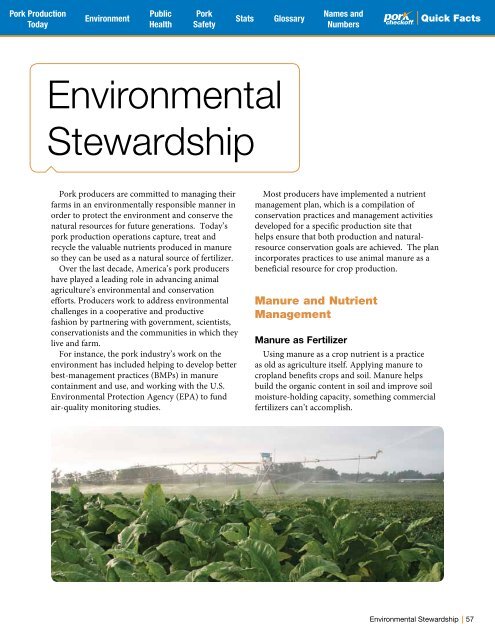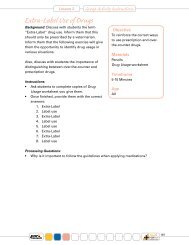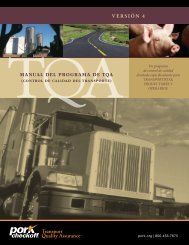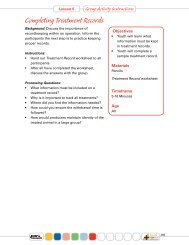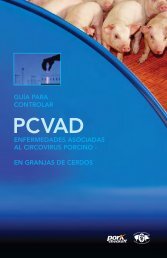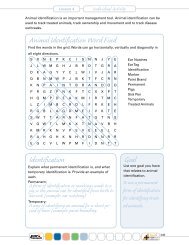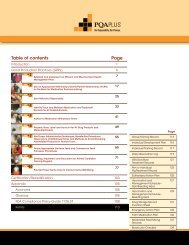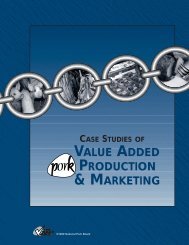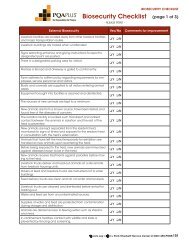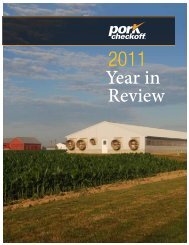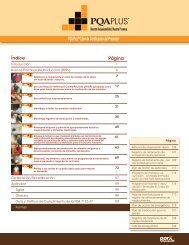The Pork Industry at a Glance - National Pork Board
The Pork Industry at a Glance - National Pork Board
The Pork Industry at a Glance - National Pork Board
Create successful ePaper yourself
Turn your PDF publications into a flip-book with our unique Google optimized e-Paper software.
<strong>Pork</strong> Production<br />
Public<br />
<strong>Pork</strong><br />
Names and<br />
Environment<br />
St<strong>at</strong>s<br />
Glossary<br />
Today Health Safety Numbers<br />
Quick Facts<br />
Quick Facts<br />
Environmental<br />
Stewardship<br />
<strong>Pork</strong> producers are committed to managing their<br />
farms in an environmentally responsible manner in<br />
order to protect the environment and conserve the<br />
n<strong>at</strong>ural resources for future gener<strong>at</strong>ions. Today’s<br />
pork production oper<strong>at</strong>ions capture, tre<strong>at</strong> and<br />
recycle the valuable nutrients produced in manure<br />
so they can be used as a n<strong>at</strong>ural source of fertilizer.<br />
Over the last decade, America’s pork producers<br />
have played a leading role in advancing animal<br />
agriculture’s environmental and conserv<strong>at</strong>ion<br />
efforts. Producers work to address environmental<br />
challenges in a cooper<strong>at</strong>ive and productive<br />
fashion by partnering with government, scientists,<br />
conserv<strong>at</strong>ionists and the communities in which they<br />
live and farm.<br />
For instance, the pork industry’s work on the<br />
environment has included helping to develop better<br />
best-management practices (BMPs) in manure<br />
containment and use, and working with the U.S.<br />
Environmental Protection Agency (EPA) to fund<br />
air-quality monitoring studies.<br />
Most producers have implemented a nutrient<br />
management plan, which is a compil<strong>at</strong>ion of<br />
conserv<strong>at</strong>ion practices and management activities<br />
developed for a specific production site th<strong>at</strong><br />
helps ensure th<strong>at</strong> both production and n<strong>at</strong>uralresource<br />
conserv<strong>at</strong>ion goals are achieved. <strong>The</strong> plan<br />
incorpor<strong>at</strong>es practices to use animal manure as a<br />
beneficial resource for crop production.<br />
Manure and Nutrient<br />
Management<br />
Manure as Fertilizer<br />
Using manure as a crop nutrient is a practice<br />
as old as agriculture itself. Applying manure to<br />
cropland benefits crops and soil. Manure helps<br />
build the organic content in soil and improve soil<br />
moisture-holding capacity, something commercial<br />
fertilizers can’t accomplish.<br />
Environmental Stewardship<br />
57


